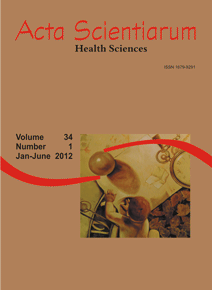<b>The profile of teenage mothers attending in a teaching hospital at Southern Brazil</b> - doi: 10.4025/actascihealthsci.v34i1.8946
Keywords:
pregnancy, adolescence, women's health
Abstract
The adolescent pregnancy brings social, emotional and health consequences. The aim of this study was to delineate the profile of teenage mothers attended in a Teaching Hospital in Southern Brazil. This is an observational, retrospective, and transversal research. The sample was composed by adolescents, attended at the Maternity from the Hospital Universitário do Oeste do Paraná (HUOP), during October 2008. A high number of births among adolescents (26.22%) was evidenced. Most of them lived in urban areas, with incomplete secondary education, early sexual activity, consensual union, low family income, without gainful activity, started prenatal care later and was in the first pregnancy. The results are similar to other studies with pregnant adolescents in Brazil. Programs aiming the prevention of sexually transmitted diseases and consequently the unwanted pregnancy in adolescence, are not presenting the expected results. Activities for health education are necessary among the adolescents. An educational work performed in partnership with schools and parents is an alternative. During the prenatal period and after the birth of the child, it is necessary to work with the care beyond the physical health of the mother and the baby.
Downloads
Download data is not yet available.
Published
2011-07-26
How to Cite
Tavares, K. O., Paganotto, K. M., Frare, J. C., Carvalho, M. D. de B., & Pelloso, S. M. (2011). <b>The profile of teenage mothers attending in a teaching hospital at Southern Brazil</b> - doi: 10.4025/actascihealthsci.v34i1.8946. Acta Scientiarum. Health Sciences, 34(1), 9-15. https://doi.org/10.4025/actascihealthsci.v34i1.8946
Issue
Section
Health Sciences
DECLARATION OF ORIGINALITY AND COPYRIGHTS
I Declare that current article is original and has not been submitted for publication, in part or in whole, to any other national or international journal.
The copyrights belong exclusively to the authors. Published content is licensed under Creative Commons Attribution 4.0 (CC BY 4.0) guidelines, which allows sharing (copy and distribution of the material in any medium or format) and adaptation (remix, transform, and build upon the material) for any purpose, even commercially, under the terms of attribution.
Read this link for further information on how to use CC BY 4.0 properly.























5.png)







